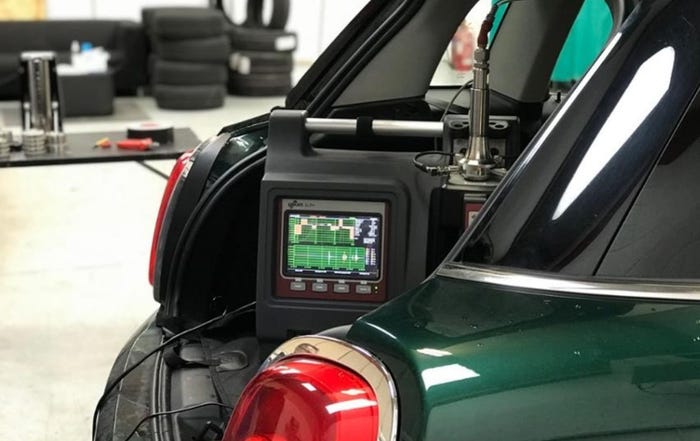The Tariffs Bought Some Time. Now Here’s What We’ve Got to Do
Legacy automakers and suppliers can compete. But they need to move fast and be open to unconventional ideas.

Every CEO of every car company outside of China has heartburn today. How are they going to compete with Chinese OEMs who have a 35% cost advantage? There’s no easy answer, and import tariffs are not the solution. They only buy some time. Dealing with this is going to require drastic, uncomfortable decisions.
Carlos Tavares, CEO of Stellantis, has already set the bar. He decided he wasn’t going to sit around and study the situation. He ran to Leapmotors in China to make cars for Stellantis that it will sell in global markets. And if tariffs block the way, Stellantis will build Leapmotor cars in its own assembly plants. It’s already doing that at a plant in Poland.
But it goes beyond that. Friends in the field tell me Stellantis is telling its suppliers they’d better cut prices 35%, or else their business will be awarded to companies in “best-cost countries.” That’s Tavares’ euphemism for giving the business to companies in China, Morocco, Turkey, Algeria, Egypt and South Africa.
Actually, most of that business will not be sourced from China directly, because everyone is worried about China invading Taiwan and a shooting war breaking out in the South China Sea. If that happens, nothing will get shipped out of China to Europe or North America. Even so, Chinese suppliers will likely get much of the business because they’ll build their own plants in those “best-cost” countries.
Now, the rest of all the legacy OEMs have to react to what Tavares is doing. They can’t cede a 35% cost advantage to Stellantis.
But Tavares’ move threatens legacy operations, the people who work there and the communities they operate in. We’re talking plant closings and layoffs, and that is going to invite an ugly labor/political/public backlash that will vilify the company and its management. Ugh. Who wants to go through that?
Besides, the Tavares move doesn’t really fix why Stellantis isn’t competitive. In fact, it skips over trying to fix it and relies on outsiders to save the company. To me, that’s a slippery downhill slope.
I think legacy automakers and suppliers can compete. But they need to move fast and be open to unconventional ideas.
First, product and process simulation are a key. Simulation allows engineers to quickly iterate different designs to find the best solution. Better still, it allows them to cut way back on the number of prototypes and the amount of testing they have to do, which saves a ton of time and money. And it allows them to integrate as many parts as possible to cut cost.
Second, they need to innovate through a first principles approach – not just with vehicles, components or manufacturing, but also with corporate organizational structure. Legacy organizational structure simply can’t move fast enough; it needs to change. And that requires a re-think of how to get things done.
Third, we need a lot more collaboration between OEMs and Tiers to get maximum parts consolidation and the best systems designs at much lower cost. That means suppliers have to be involved at the earliest stages of product development, which means major sourcing decisions will have to be made before design even starts. A radical idea, to be sure.
But it goes beyond that. Suppliers need to collaborate with each other. If you want to get maximum parts consolidation and the best systems design at the lowest cost, then suppliers need to work together when designing a module or system. A car or module can no longer be a collection of the cheapest sourced parts. It has to be the best total-system design.
And then comes a radical step: OEMs need to collaborate with each other to achieve across-the-board parts consolidation and high manufacturing volume in areas that are invisible to the customer and don’t threaten brand identity. There are plenty of areas where automakers pretty much use the same parts from the same suppliers, and a common, shared design could take out a ton of cost.
I live in the Detroit area, and it’s definitely under threat by the changing competitive landscape. It’s time for General Motors and Ford to figure out where they can collaborate to cut costs and bring their suppliers in early to make it happen.
Every time I bring up the need to compete with China I get blowback about Chinese subsidies, low wages, Uighur slave labor and Communist Party control of Chinese automakers and suppliers.
It reminds me of all the excuses I heard back in the 1980s when Japanese automakers were beating up Detroit. Back then, the hand-wringers wailed about low wages, a weak yen and Japan Inc. as reasons why they couldn’t compete.
And then we all learned how the Japanese were simply running their operations better. Lean manufacturing gave them higher uptime, higher throughput, better quality and lower cost. It wasn’t until Detroit swallowed its pride and started getting lean itself that it turned things around.Now it’s time to do the same thing with the Chinese. So, no more bellyaching. No more excuses. Just swallow your pride, roll up your sleeves and learn how to compete.
About the Author
You May Also Like





